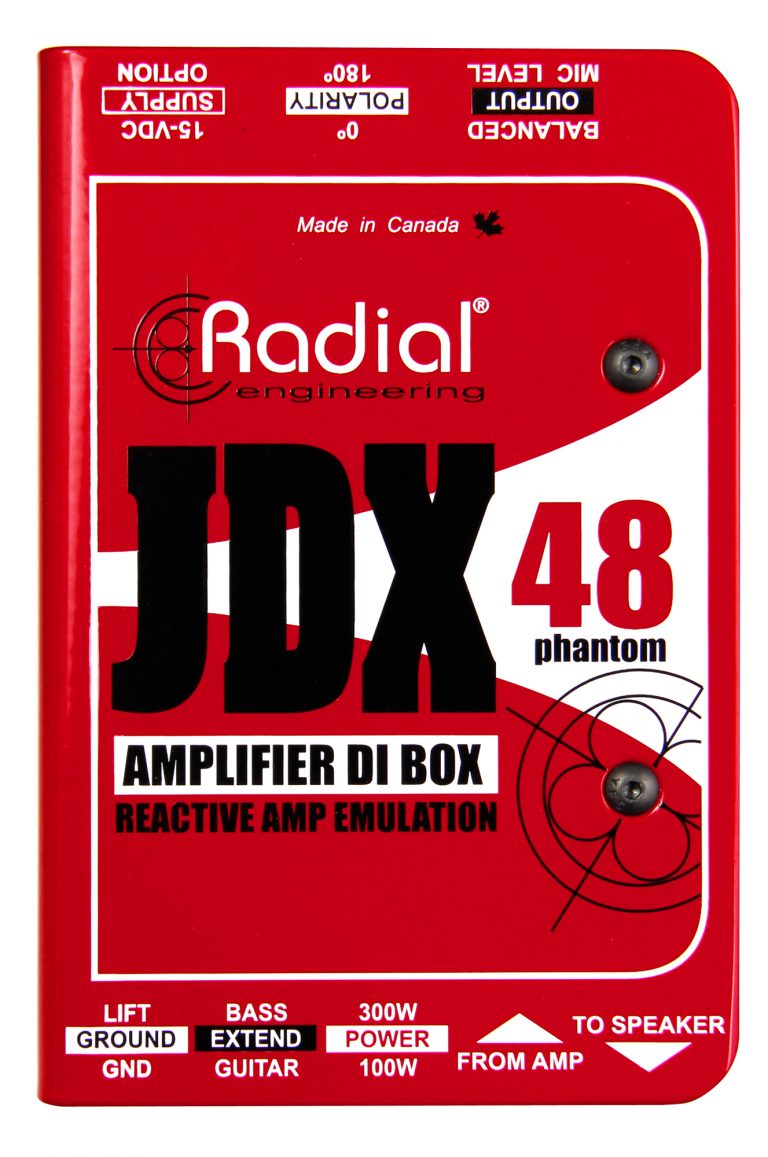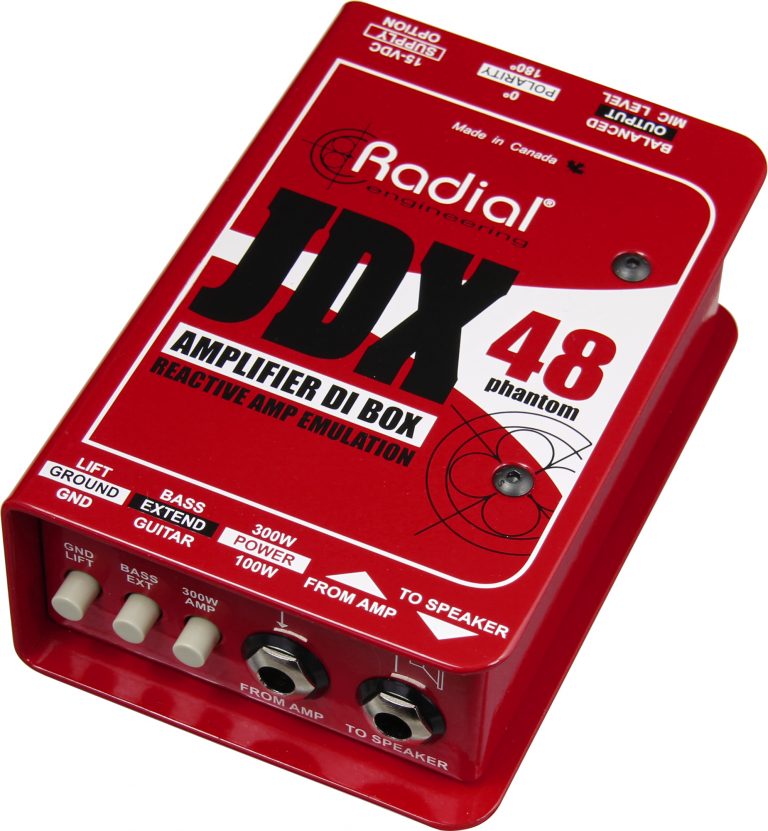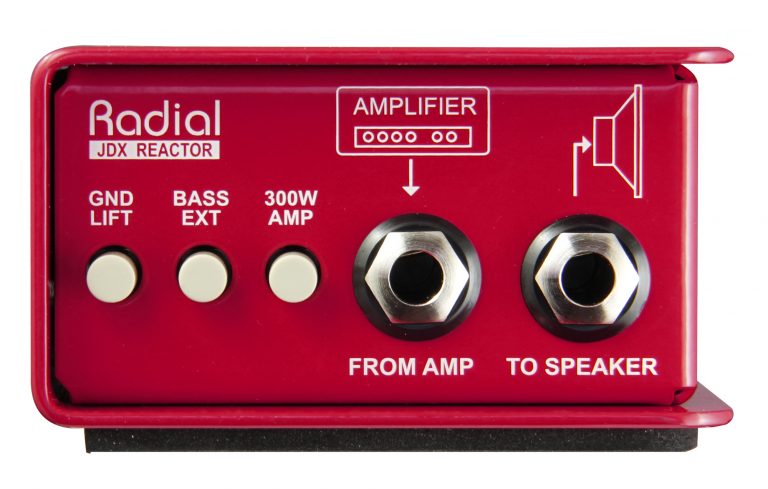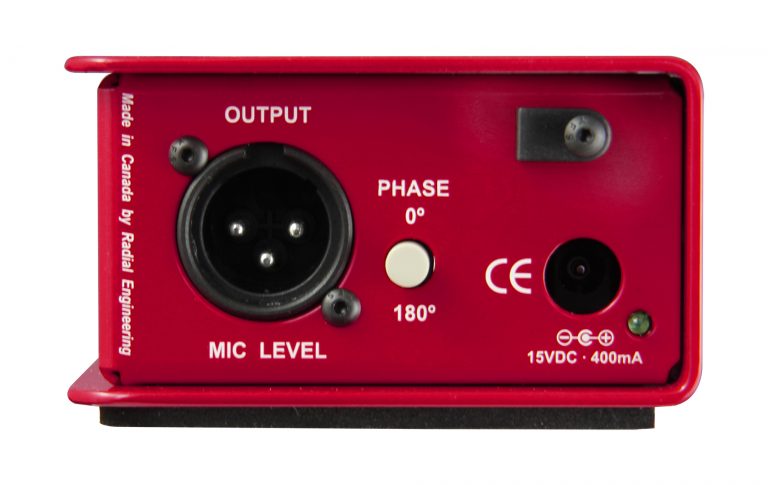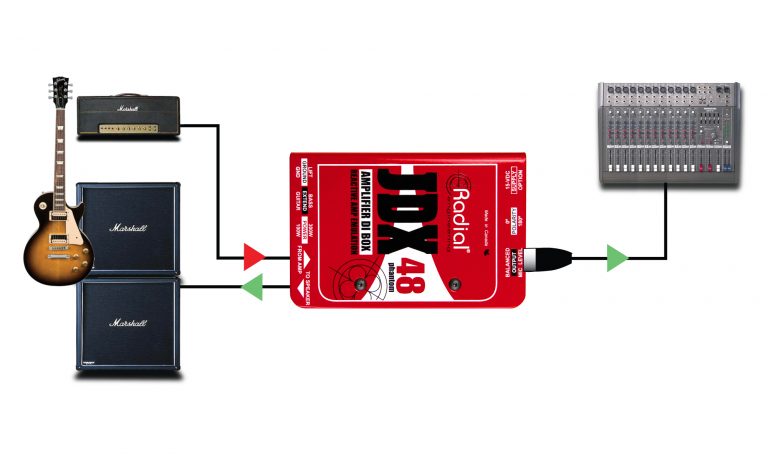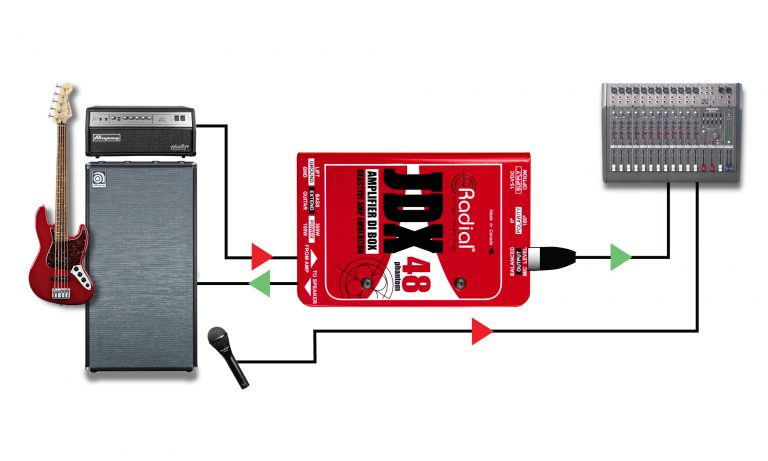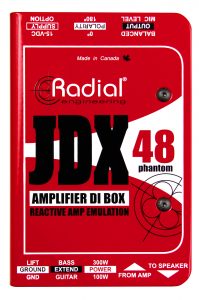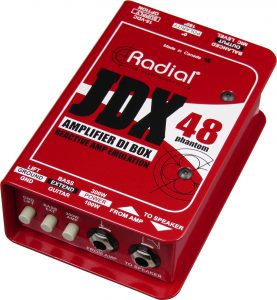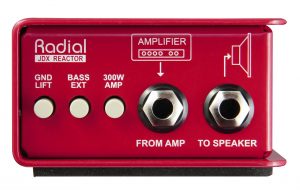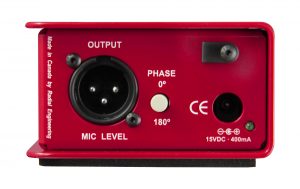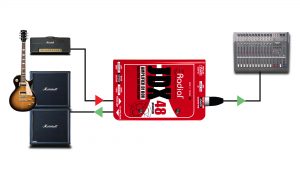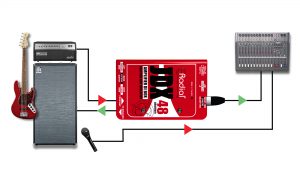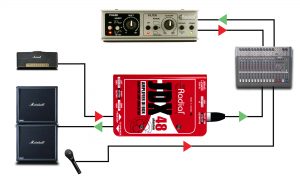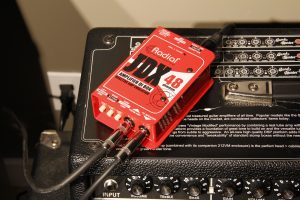If you don't see the question you had in mind here, feel free to enter in the form provided along with your email address so we may send the reply directly to you. Thanks for your participation!
What is the difference between the original Radial JDX™ and the JDX 48?
The new JDX 48 can be phantom powered, is equipped with a low frequency extension and can handle more power.
Can I upgrade my old JDX so that it can be phantom powered?
No. The circuit has been upgraded and parts have been added.
Will the Radial JDX 48 affect the impedance on my amp?
No. The JDX 48 is designed to capture the powerful signal coming from the head and the back EMF from the speaker and tap off what it needs before being re-amplified and sent to the sound system. This has no effect on the amp load or impedance.
Can I use the JDX 48 on a bass amp?
Yes – absolutely. When the bass extension is off, it will produce the character and tone you would expect from 12″ drivers which can prove to be quite good. Keep in mind many bass amps use 10″ drivers such as the venerable Ampeg SVT. With the bass extension on, the low frequency response will sound more like a 15″driver.
Can I use the JDX 48 without a speaker cabinet or load box connected?
No. You must use some sort of load to absorb the energy coming from the amplifier head. Without a load of some sort, the JDX 48 and output stage of your amplifier would overheat and become damaged. The Radial Headload is designed for this application.
Will the JDX 48 sound OK with a load box?
Some load boxes are better than others, but so far, we have never tried one that sounds as good as a speaker cabinet. Load boxes simply take the energy from the amp and convert it to heat. This is not the same as driving a speaker. The new Headload combines a reactive load with load resistors, making it the closest yet!
Can I use the Radial JDX 48 like a regular DI box?
No. It is designed specifically to handle high output levels from guitar amplifiers. Plugging a guitar directly into the JDX will not produce sufficient signal to drive it.
Can I use the balanced output of the JDX 48 to drive another guitar amp?
Yes! This ‘trick’ can lead to creative new tones where you are essentially using one amp like a distortion pedal before the signal is amplified by the second amp. You will need an XLR to ¼” cable wired like this: XLR pin-1 and pin-3 to ¼” ground (shield), XLR pin-2 to ¼” tip. You will also need to power the JDX using the 15VDC supply.
Will the JDX 48 sound exactly like my head and amp?
No. The JDX 48 simulates the sound of your amp and speaker and will generate a close facsimile. But don’t be fooled. Nothing will ever completely replace the sweet sound of a vintage Deluxe or the powerful feel of a JCM800 half-stack turned to 11.
With a combo amp, can I use the ¼” extension speaker output?
Yes. Make sure your speaker is connected – as the JDX 48 is not a load box. Failing to do so would send all of the power into the JDX 48 which would likely blow it up!
Can I plug my guitar and pedals into the JDX 48 to replace my guitar amp on stage?
No. The JDX 48 is designed to handle the high output of a guitar amplifier. Pedals do not produce a sufficiently strong signal to work. The JDX 500 – part of the 500 series studio range – can however be used as it is equipped with a guitar level input.
Can I use the JDX 48 with a guitar preamp?
No. The JDX 48 is designed to accept the speaker output from a guitar amp, not a preamp output level. Good news is that the JDX 500 is able to be used this way, but of course requires a power rack like the Radial Powerstrip to provide the supply current and housing.
Can I use the JS2/3 to split the signal coming from the JDX 48 amplifier DI and send it to 2 or 3 destinations?
Yes! Absolutely!
Does the JDX 48 Reactor work with a solid-state power amp?
Yes. The JDX 48 will work with any amplifier including a bass amp. Simply ensure the JDX 48 is connected to a speaker or load box to ensure safe use.
Can I use the JDX 48 with a bass amp?
Yes. You can set the JDX 48 for use with 100 watt and 300 watt amps. Make sure your speaker is connected.
Can I use the JDX 48 with a both solid and tube state amp?
Yes. Absolutely. The JDX 48 does not care if the amp is tube or solid state.
What kind of cables should I use to connect the JDX 48?
Always use high quality, heavy gauge (12 to 14 AWG) speaker cable in between the head and cabinet to ensure proper signal flow. Do not use coaxial guitar cables as the wire gauge is too thin for high power amps.
Can the original JDX be damaged by 48V phantom power?
No. It is equipped with blocking capacitors to protect it.
Can I run the output of the Radial JDX 48 directly into the input of the Radial Phazer and then out to the mixing console?
Yes. You may need to engage the PAD at the console input if the signal is too hot.
How do I hook up the JDX 48 with a load box?
It is connected exactly as if using a speaker box. Connect the speaker output from your amp into the input jack labelled ‘FROM AMP’ on the JDX 48 and connect the jack labelled ‘TO SPEAKER’ on the JDX 48 into the input of your load box.
Can the JDX 48 be used on a pedal board at a ‘guitar’ signal level?
No. It is designed for high output signals such as those produced by guitar amps.
When used on bass, are there any tonal differences between the original JDX and the newer JDX-48?
Yes. The original focussed the sound towards a 4×12 cabinet while the new version features a bass extension to replicate a 15″ driver. In most cases, the sound of the original is more than adequate for bass as one merely needs to look at an SVT cabinet that employs 10″ drivers as reference.
Can I used the JDX-48 in between the preamp and power amp connections to capture the sound of my guitar amp?
No. The JDX-48 requires a speaker level input to work. Simply make up a couple of cables with speaker ‘spade’ connectors to ¼” to go in and out of the JDX-48. A Radial JDI will also work, but it does not have the speaker emulation filters.
After making speaker and amp connections on JDX 48, how is the phantom power fed to the JDX?
Phantom power comes from the mixing console, through the balanced XLR mic cable. The power supply is not required.
Can I still play through my amp if the JDX 48 is wired up but not powered?
Yes, the JDX will always pass signal through to the speaker cabinet, so your amp will still function normally even if phantom power is disengaged or the JDX 48 power supply is disconnected.

